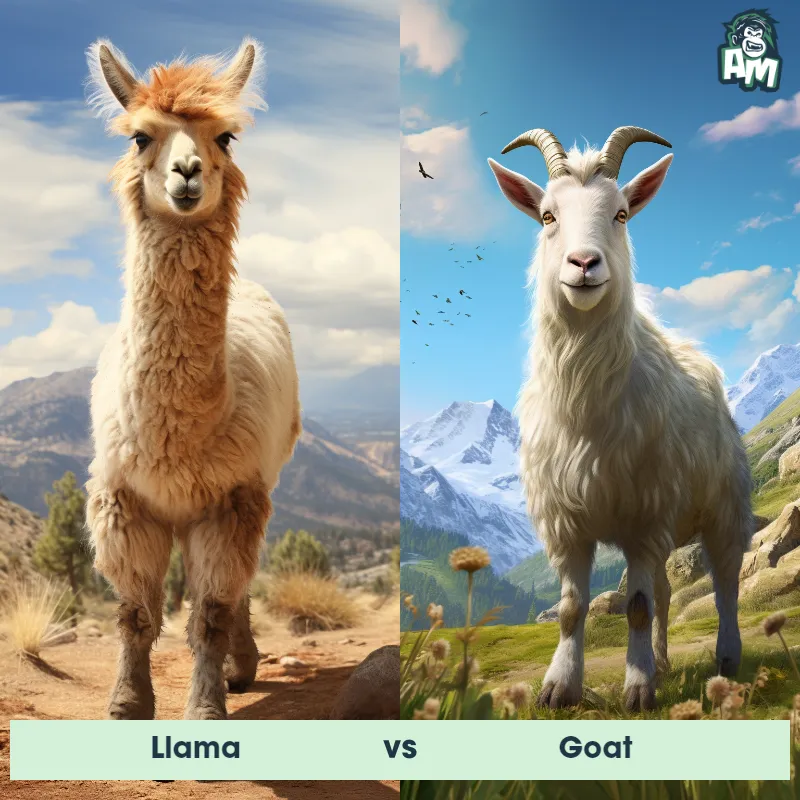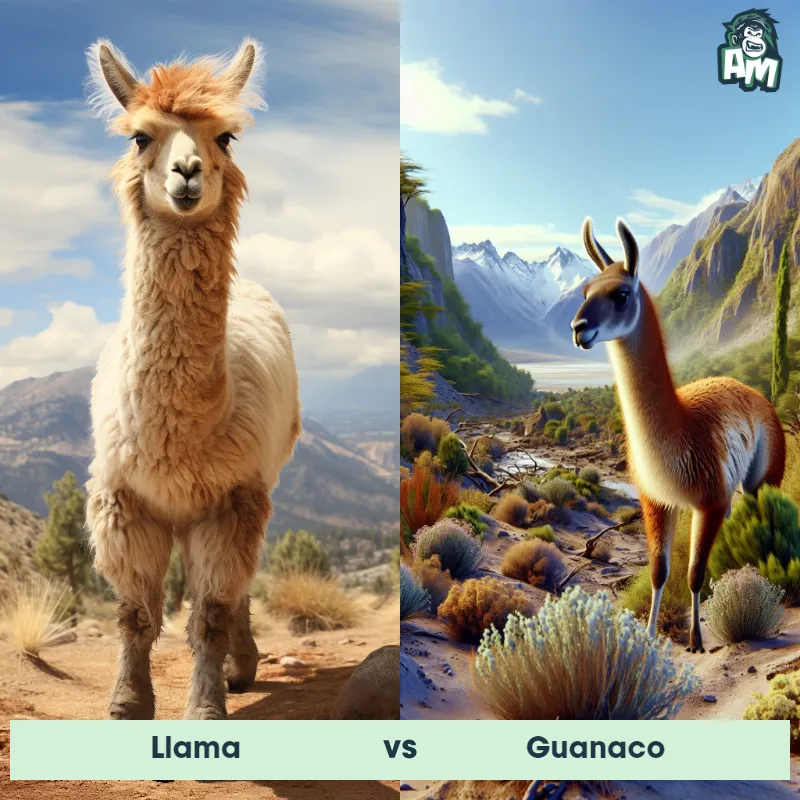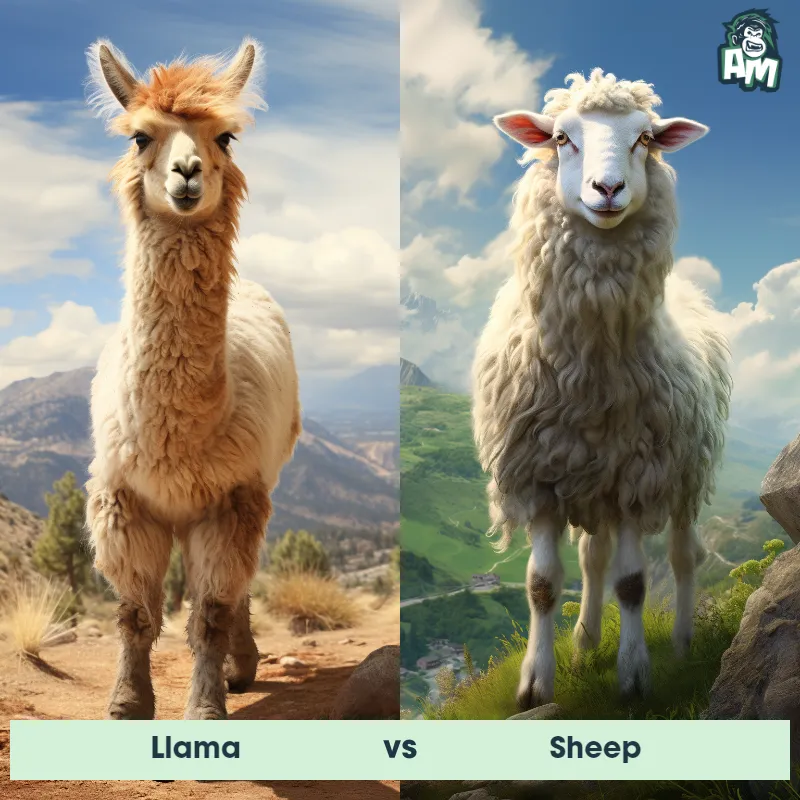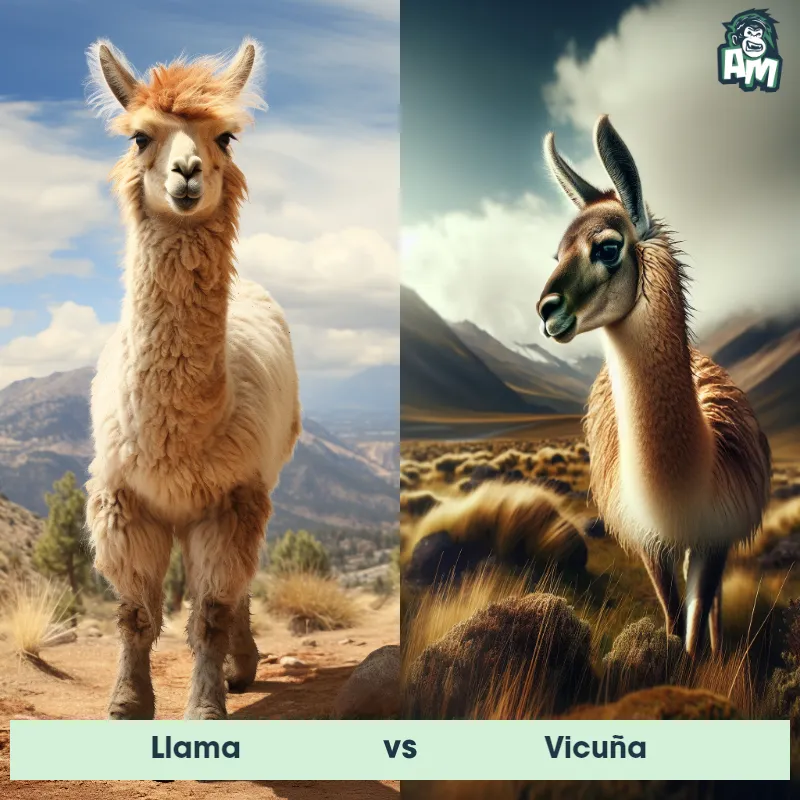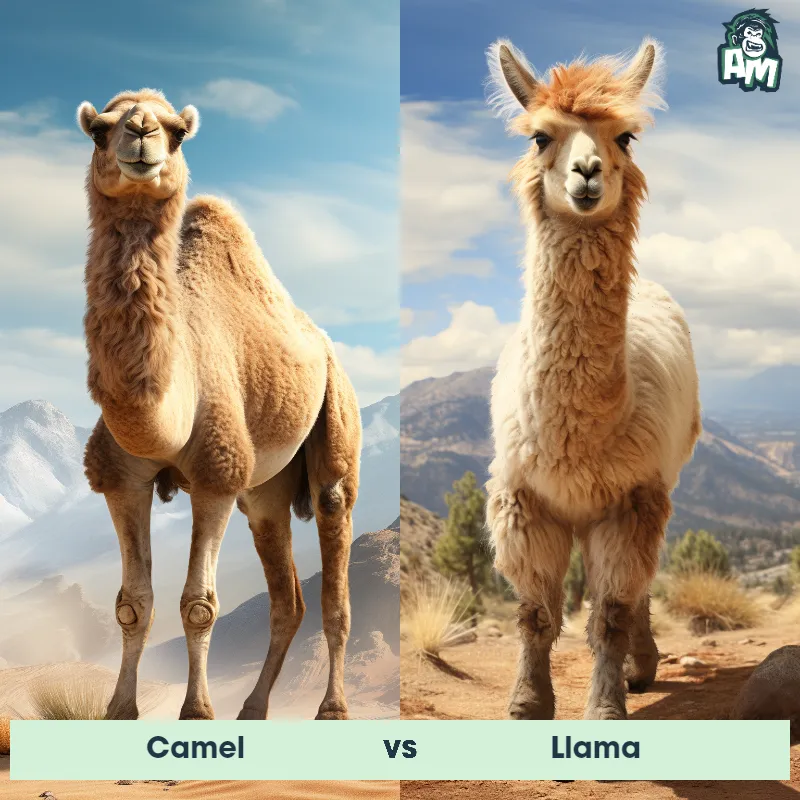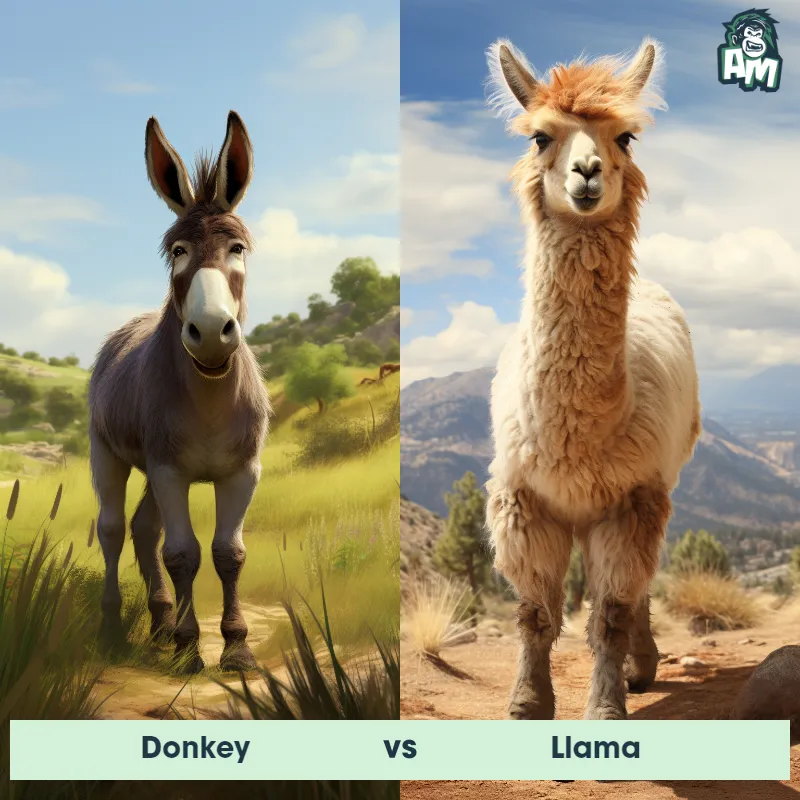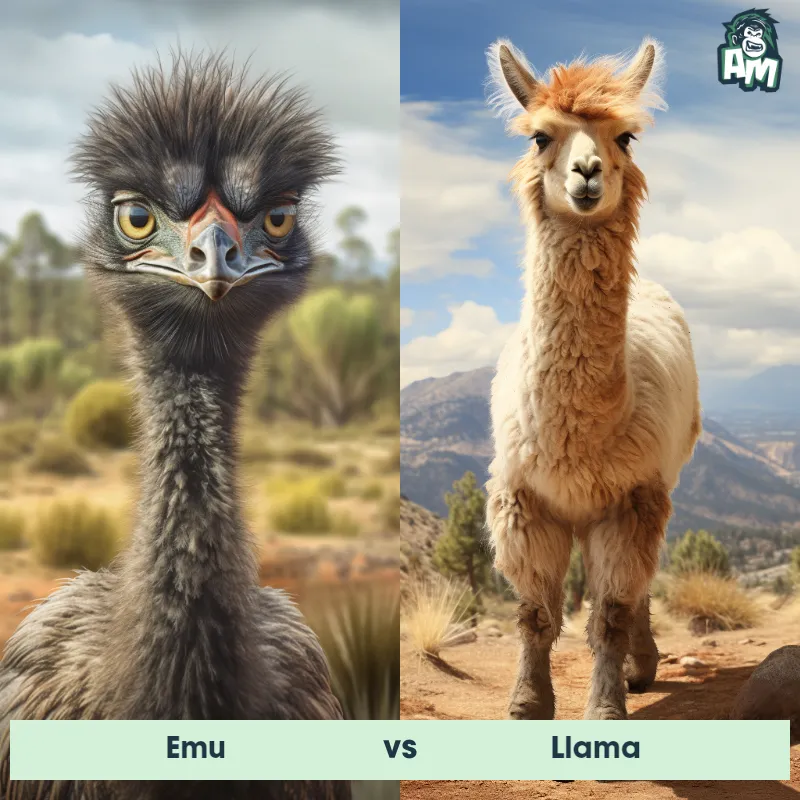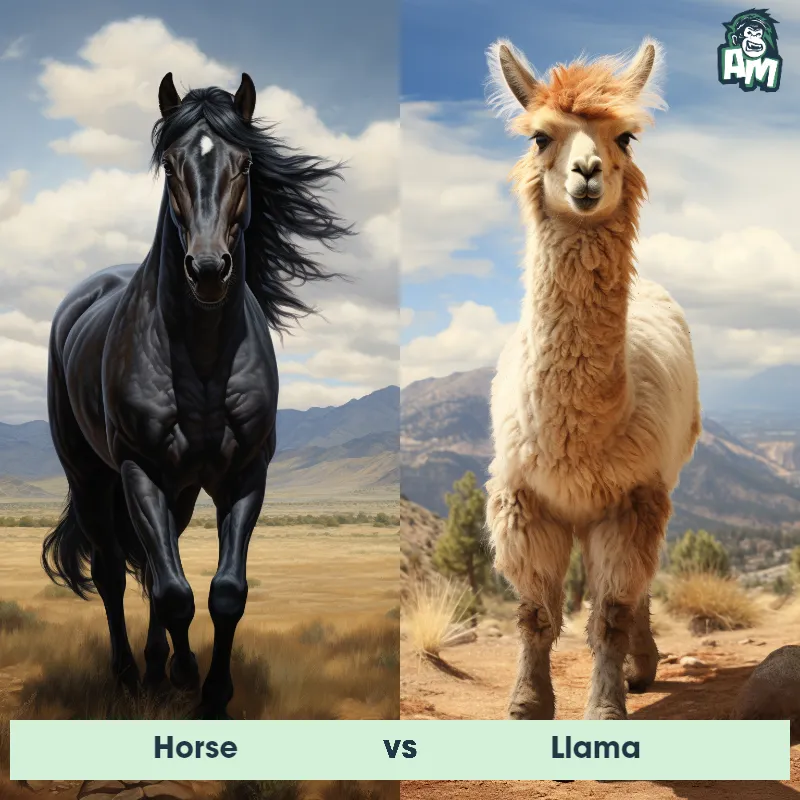The llama
Llamas are domesticated South American camelids known for their unique appearance and docile behavior. They have a long, slender body with two-toed feet and can stand around 6 feet tall at the shoulder. Their thick woolly coat comes in various colors and can be solid or patterned. Llamas have a curious and intelligent nature, with large, expressive eyes and long, graceful necks. They are known for their ability to adapt to harsh climates and have been used for centuries as pack animals and for their luxurious fiber.
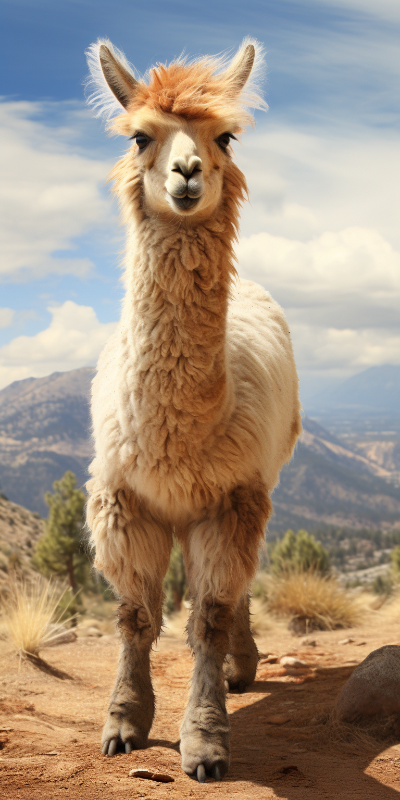
| llama | |
|---|---|
| Size | 5.6 to 5.9 feet tall at the shoulder (1.7 to 1.8 meters) |
| Weight | 290 to 440 pounds (130 to 200 kilograms) |
| Speed | 35mph (56km/h) |
| Key Strength | Ability to spit, kick, and charge at opponents |
| Biggest Weakness | Lack of sharp teeth or claws for defense |
| Scientific Name | Lama glama |
| Family | Camelidae |
| Habitat | Mountainous, high altitude regions |
| Geography | Native to South America, specifically the Andean region |
| Diet | Herbivore, primarily grazing on grasses and other vegetation |
| Lifespan | 15 years - 25 years |

The llama
Llamas are domesticated South American camelids known for their unique appearance and docile behavior. They have a long, slender body with two-toed feet and can stand around 6 feet tall at the shoulder. Their thick woolly coat comes in various colors and can be solid or patterned. Llamas have a curious and intelligent nature, with large, expressive eyes and long, graceful necks. They are known for their ability to adapt to harsh climates and have been used for centuries as pack animals and for their luxurious fiber.
Fun Fact: Llamas have a special ability to communicate through a variety of vocalizations, including humming, clucking, and even a distinctive alarm call known as a "buck."
| llama | |
|---|---|
| Size | 5.6 to 5.9 feet tall at the shoulder (1.7 to 1.8 meters) |
| Weight | 290 to 440 pounds (130 to 200 kilograms) |
| Speed | 35mph (56km/h) |
| Key Strength | Ability to spit, kick, and charge at opponents |
| Biggest Weakness | Lack of sharp teeth or claws for defense |
| Scientific Name | Lama glama |
| Family | Camelidae |
| Habitat | Mountainous, high altitude regions |
| Geography | Native to South America, specifically the Andean region |
| Diet | Herbivore, primarily grazing on grasses and other vegetation |
| Lifespan | 15 years - 25 years |
llama Matchups
We use AI to simulate matchups between the llama and other animals. Our simulation considers size, strength, and natural predatory behaviors to determine the most likely outcome.
llama: Diet, Predators, Aggression, and Defensive Behaviors
What do llamas eat?
Llamas are herbivores and primarily graze on grass, leaves, and other vegetation. They have a three-compartment stomach that allows them to efficiently digest their food.
Do llamas have any predators?
In their natural habitats in South America, llamas do have predators such as mountain lions, coyotes, and wolves. However, when kept as livestock, llamas are generally safe from predators due to their size and protective nature.
Are llamas aggressive?
Llamas are known for their calm and gentle demeanor, but they can become aggressive when they feel threatened or stressed. They may spit, kick, or even bite if they are feeling cornered or frightened.
Do llamas fight?
Llamas are known to establish a social hierarchy within their herds through sparring matches where they push and shove each other. These fights are usually harmless and are a way for llamas to establish dominance.
How do llamas defend themselves?
When threatened, llamas have several defense mechanisms. They are known to spit, which is a mixture of saliva and partially digested stomach contents. Llamas also have sharp teeth and strong legs that they can use to kick predators or aggressors.
What is a llama's biggest weakness in a fight?
Despite their strong legs and sharp teeth, llamas are not particularly adept at fighting off large predators. While they may be able to fend off smaller threats, they are vulnerable to larger animals such as mountain lions or wolves. Their best defense in such situations is their herding instinct, where they will band together to protect each other.
Fun Fact: Llamas are excellent guardians and have been used to protect livestock, such as sheep and goats, from predators like coyotes and wolves. They have an innate protective instinct and will often chase away potential threats by spitting, kicking, or herding.
Fun Fact: Llamas are highly social animals and form strong bonds within their herds. They establish a hierarchical structure and use various body postures, ear movements, and vocal cues to communicate with each other and maintain social order. They are also known to be gentle and gentle-natured, making them popular therapy animals.



